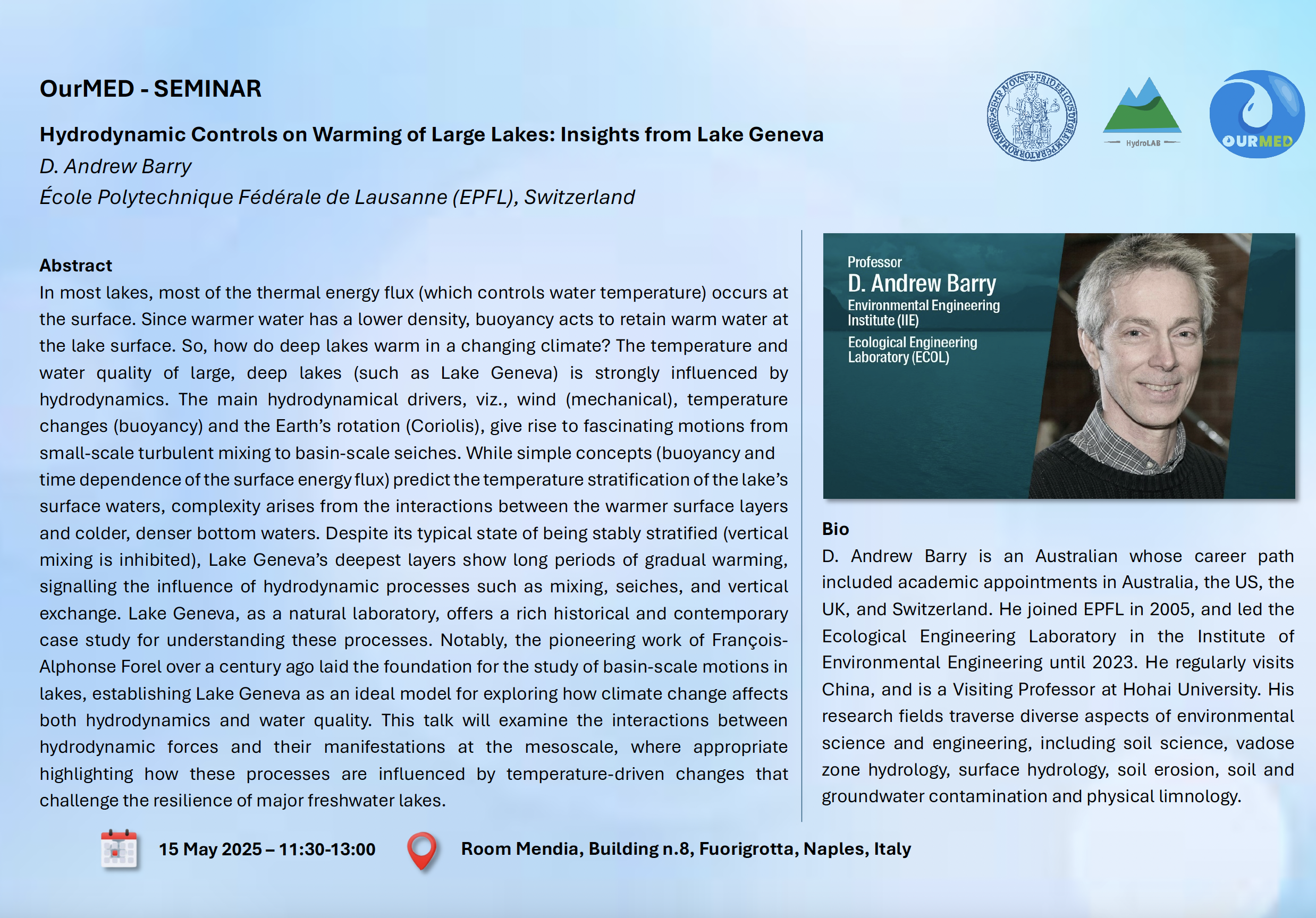In most lakes, most of the thermal energy flux (which controls water temperature) occurs at the surface. Since warmer water has a lower density, buoyancy acts to retain warm water at the lake surface. So, how do deep lakes warm in a changing climate? The temperature and water quality of large, deep lakes (such as Lake Geneva) is strongly influenced by hydrodynamics. The main hydrodynamical drivers, viz., wind (mechanical), temperature changes (buoyancy) and the Earth’s rotation (Coriolis), give rise to fascinating motions from small-scale turbulent mixing to basin-scale seiches. While simple concepts (buoyancy and time dependence of the surface energy flux) predict the temperature stratification of the lake’s surface waters, complexity arises from the interactions between the warmer surface layers and colder, denser bottom waters. Despite its typical state of being stably stratified (vertical mixing is inhibited), Lake Geneva’s deepest layers show long periods of gradual warming, signalling the influence of hydrodynamic processes such as mixing, seiches, and vertical exchange. Lake Geneva, as a natural laboratory, offers a rich historical and contemporary case study for understanding these processes. Notably, the pioneering work of François-Alphonse Forel over a century ago laid the foundation for the study of basin-scale motions in lakes, establishing Lake Geneva as an ideal model for exploring how climate change affects both hydrodynamics and water quality. This talk will examine the interactions between hydrodynamic forces and their manifestations at the mesoscale, where appropriate highlighting how these processes are influenced by temperature-driven changes that challenge the resilience of major freshwater lakes.
